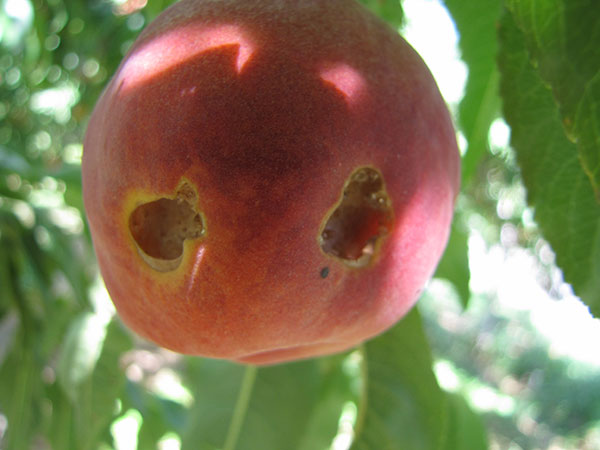European Earwigs on Fruit
HOSTS
- Apples
- Apricot
- Peach/Nectarine
- Ripe Fruit is Especially Damaged
DESCRIPTION
The non-native pest, European earwig, has become a pest in the arid western regions. Earwigs will climb the trunk or stem and chew into fruits as they near maturity. They are especially fond of peaches, nectarines, apricots, and berries. They often gain entry by wounds or openings, such as split-pits in peaches. They seek tight hiding spaces.
Earwigs also feed on decaying matter and other insects, so they can be beneficial. The "forceps" on the hind end are called cerci, and are used to hold food, ward off predators, and for mating.
BIOLOGY
European earwigs overwinter as adults and females lay eggs in the soil in early spring. Populations become noticeable by mid to late June. Wet, cool springs and summers favor this nocturnal insect.
SYMPTOMS
- Holes in fruit that may be 1/8 to 1/4 inch deep
- Chewed leaves that appear frayed or torn-looking
- Small dots of black frass (excrement) near feeding sites
GENERAL MANAGEMENT
Monitoring: Corrugated cardboard “rolls” tied onto the tree trunk can indicate when earwigs start climbing into trees. Unroll cardboard each day and discard earwigs into a can of soapy water.
Earwigs are also predators on other insects, so their presence at times other than when fruits are ripe can be beneficial. If they become a pest, they can be treated with insecticides. A small tuna can with bacon grease will trap hundreds.
Insecticides:
- Residential: Band tree trunk near base with sticky adhesive or spinosad bait°, or spray carbaryl on tree.
- Commercial: Click Here
Earwig Management
How to Trap Earwigs



